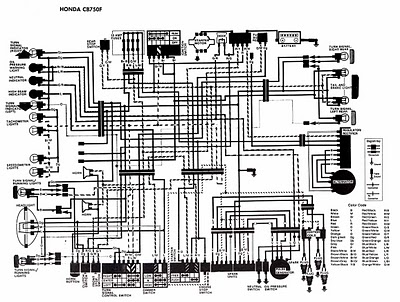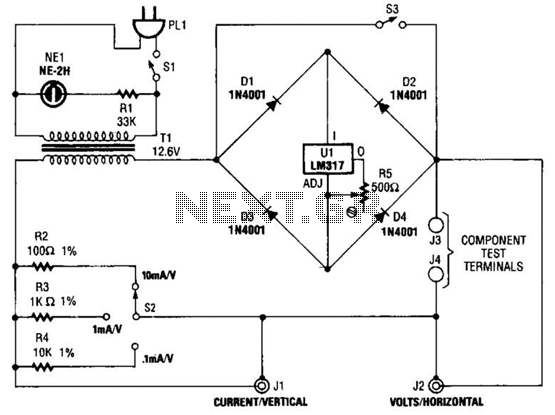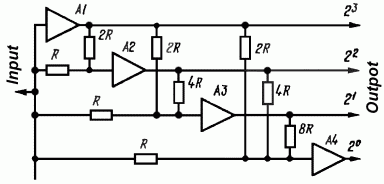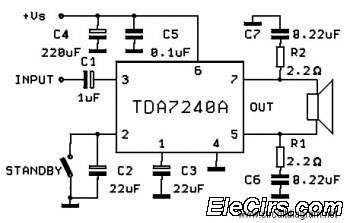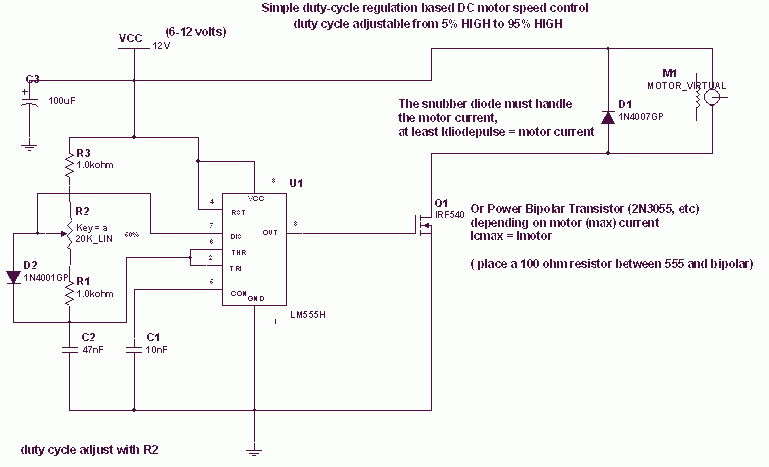
Simple Stepper Motor ControllerCircuit Based On The 7404 IC

The following circuit illustrates a simple stepper motor controller circuit diagram. This circuit is based on the 7404 integrated circuit. Features include suitable heat dissipation.
The simple stepper motor controller circuit utilizes the 7404 hex inverter IC to control the operation of a stepper motor. The 7404 IC consists of six independent inverters, which can be employed to generate the necessary control signals for the stepper motor. The circuit operates by providing a sequence of pulses to the motor windings, allowing for precise control of the motor's position and speed.
In this configuration, the input signals to the 7404 can be generated by a microcontroller or a simple switch mechanism. The output from the 7404 drives the transistors that act as switches for the motor coils. When a logic high signal is applied to an inverter input, the output goes low, and vice versa, creating a square wave pulse that energizes the motor coils in a specific sequence.
To ensure adequate heat dissipation, it is essential to incorporate heat sinks or other thermal management solutions, especially if the circuit operates at higher currents. The design may also include diodes across the motor coils to protect against back EMF generated when the motor is de-energized, thereby preventing damage to the circuit components.
Overall, this simple stepper motor controller circuit provides an effective method for controlling stepper motors with minimal components, leveraging the capabilities of the 7404 IC for reliable operation.The following circuit shows about Simple Stepper Motor Controller Circuit Diagram. This circuit Based On The 7404 IC. Features: suitable heat .. 🔗 External reference
The simple stepper motor controller circuit utilizes the 7404 hex inverter IC to control the operation of a stepper motor. The 7404 IC consists of six independent inverters, which can be employed to generate the necessary control signals for the stepper motor. The circuit operates by providing a sequence of pulses to the motor windings, allowing for precise control of the motor's position and speed.
In this configuration, the input signals to the 7404 can be generated by a microcontroller or a simple switch mechanism. The output from the 7404 drives the transistors that act as switches for the motor coils. When a logic high signal is applied to an inverter input, the output goes low, and vice versa, creating a square wave pulse that energizes the motor coils in a specific sequence.
To ensure adequate heat dissipation, it is essential to incorporate heat sinks or other thermal management solutions, especially if the circuit operates at higher currents. The design may also include diodes across the motor coils to protect against back EMF generated when the motor is de-energized, thereby preventing damage to the circuit components.
Overall, this simple stepper motor controller circuit provides an effective method for controlling stepper motors with minimal components, leveraging the capabilities of the 7404 IC for reliable operation.The following circuit shows about Simple Stepper Motor Controller Circuit Diagram. This circuit Based On The 7404 IC. Features: suitable heat .. 🔗 External reference
Warning: include(partials/cookie-banner.php): Failed to open stream: Permission denied in /var/www/html/nextgr/view-circuit.php on line 713
Warning: include(): Failed opening 'partials/cookie-banner.php' for inclusion (include_path='.:/usr/share/php') in /var/www/html/nextgr/view-circuit.php on line 713
